By Jenny Jones
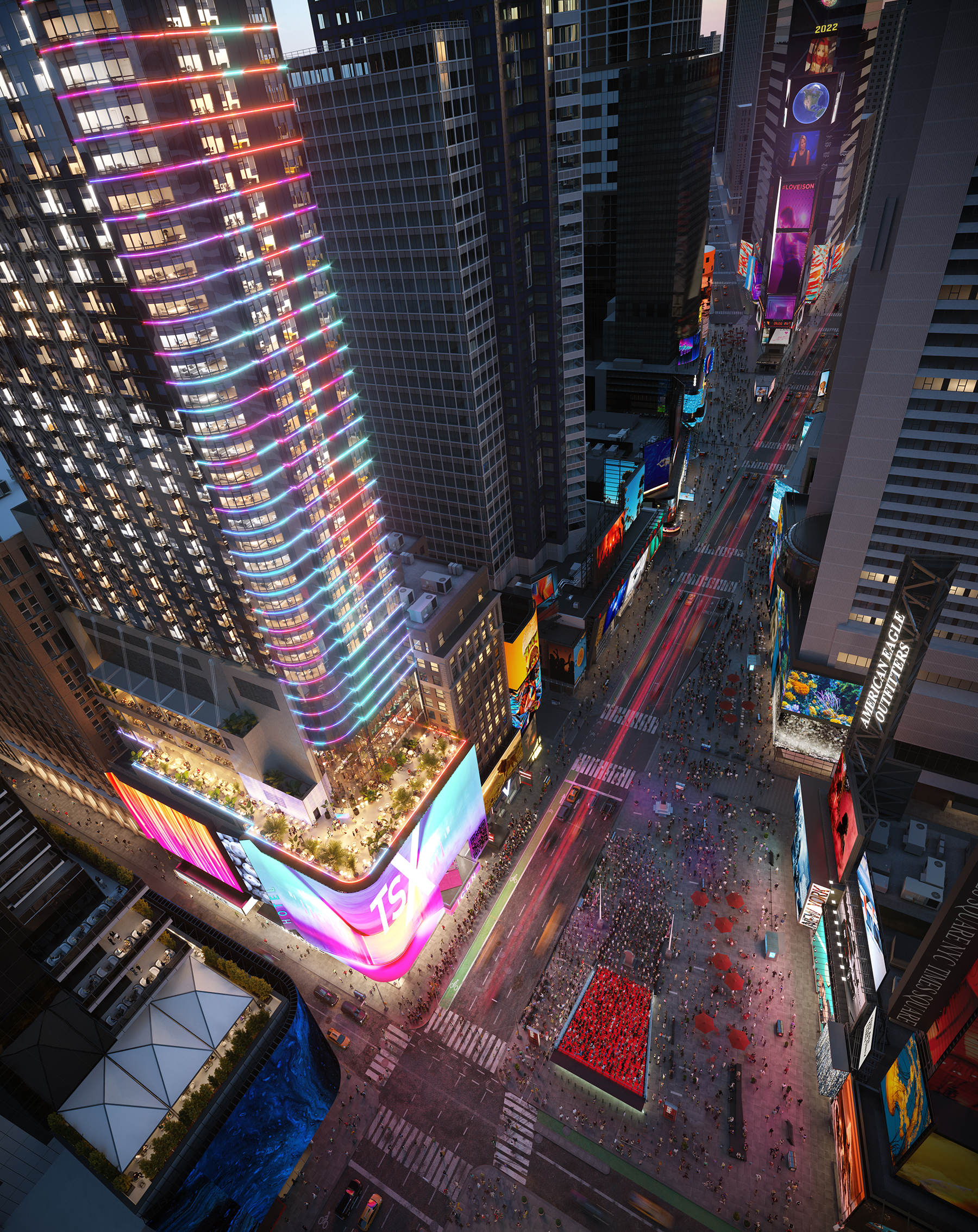
New York City’s Palace Theatre has hosted thousands of performances in its 109-year history, but perhaps none have been more remarkable than the show that’s taking place there now. A team is slowly hoisting the 1,740-seat landmark theater from its street-level elevation to its new position three stories above Times Square — a feat that the head of the foundation engineering firm involved with the project calls “a once-in-a-lifetime opportunity.”
Urban Foundation Engineering LLCis leading the theater lift as part of the TSX Broadway project. L&L Holding Co. is developing the project, which also includes demolishing the existing 43-story hotel that surrounds the theater and replacing it with a new 46-story lifestyle hotel and 100,000 sq ft of retail space. It is a complex project in one of the most high-profile locations in the country.
“When we saw this opportunity to do something so remarkable — something that challenges our unique engineering skills and contracting abilities — we just couldn’t pass it up,” says Tony Mazzo, president of Urban Foundation Engineering, a firm with a track record of delivering complicated projects, including the relocation of New York’s landmark Empire Theater in 1998. “It will be something that will, I hope, inspire the engineering community.”
Piece of history
The theater lift is captivating from not only from an engineering perspective but also a historical standpoint. In 1987, the New York City Landmarks Preservation Commission designated the three-level auditorium as an interior landmark, a title reserved for notable and publicly accessible buildings. This designation placed it among the ranks of the Empire State Building and Grand Central Terminal.
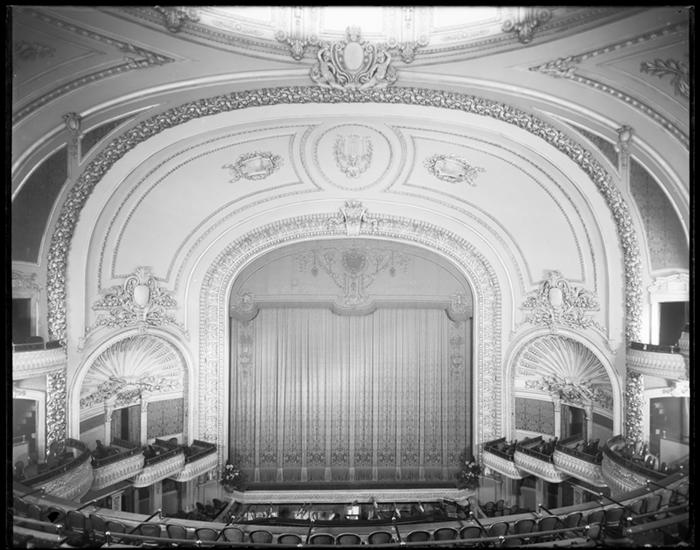
“We have a dual role here,” Mazzo says. “We’re preserving a significant piece of New York history, but we’re also creating a new piece of New York history at the same time.”
Located at the corner of West 47th Street and Seventh Avenue in Midtown Manhattan, the Palace Theatre opened in 1913 as the nation’s preeminent vaudeville house. (At the time, the theater included an adjoining 11-story office wing, which was replaced with the 43-story hotel in the late 1980s.) In the 1930s, the theater became a cinema that intermittently hosted vaudeville shows through the 1950s. It then closed for some time before the Nederlander Organization, which counts nine New York City theaters among its national portfolio, purchased it in 1965 and ran it as a Broadway theater until it closed in 2018.
As part of TSX Broadway, the theater is expected to reopen again by the end of 2022 — this time in its new location, 30 ft above street level, along Times Square. Lifting the theater will preserve the historic auditorium while also vacating nearly 15,000 sq ft at street level.
“The biggest reason we are lifting the theater is to open up a large volume of space for ground-floor retail, which is obviously the most financially advantageous location for retail in Times Square,” says Robert Israel, executive vice president of L&L.
Retained slab
In addition to lifting the theater, L&L is working in coordination with the New York City Landmarks Preservation Commission, the Nederlander Organization, and historical architect PBDW Architects on a $50 million effort to restore the theater’s interior to its original 1913 condition. It’s one of two main facets of the existing structure that the firm is preserving. The other is the foundation.
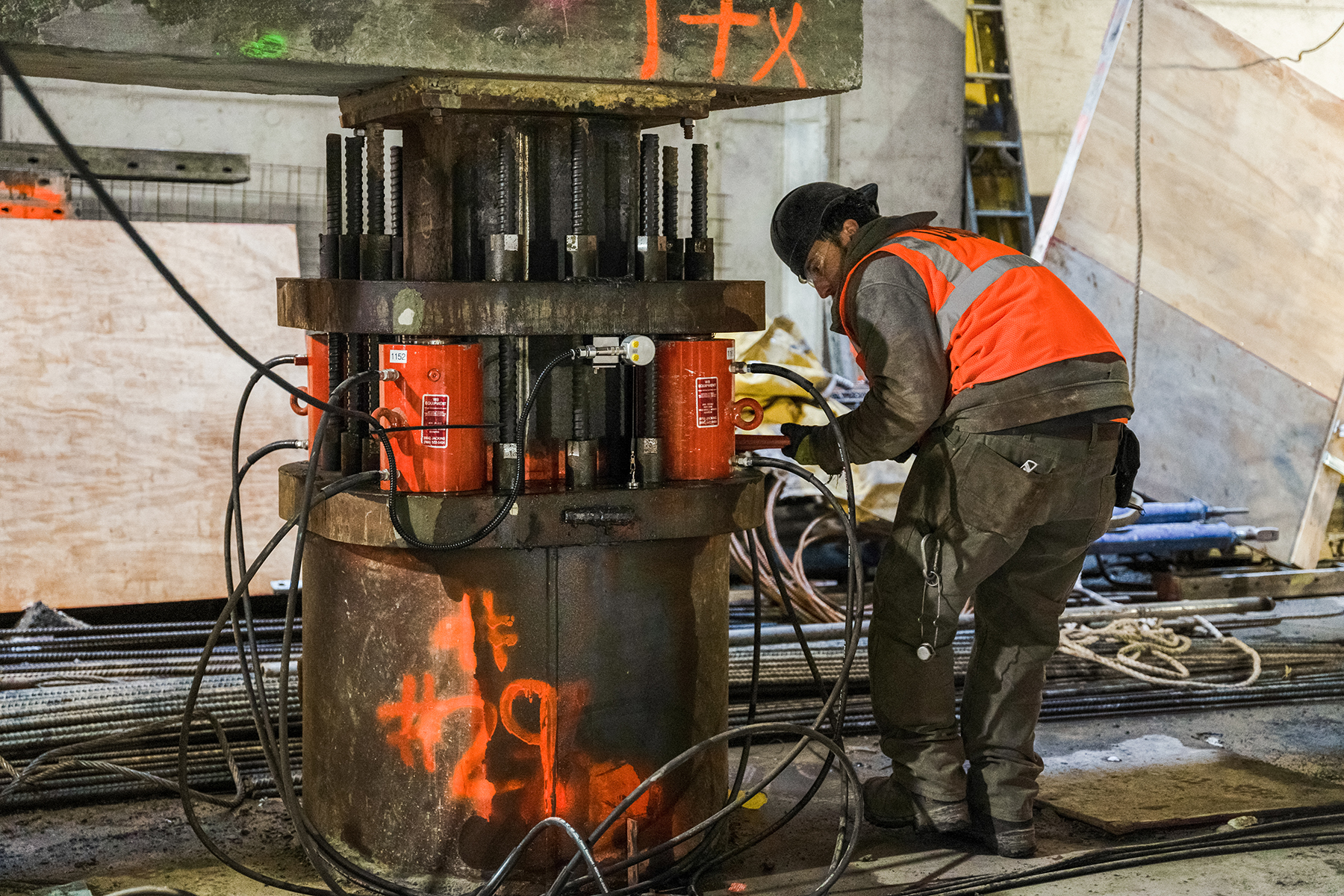
Like thousands of other buildings in Manhattan, the existing theater/hotel complex could not be constructed under today’s New York City zoning laws. The scope of the TSX Broadway project, including the theater lift, is too expansive to meet current zoning requirements for new construction. But Israel says that because his firm is preserving a portion of the existing building foundation, it meets the zoning requirements for reconstruction.
"We had to retain 25% of the existing slab in order to maintain our overbuilt condition,” explains Israel, whose firm’s portfolio also includes 425 Park Avenue — the first full-block office development on the avenue in 50 years — and the reconstruction of 390 Madison Avenue. “If we did not retain the slab, we would have been required to reduce the project by 84,000 sq ft, and we would have been unable to elevate the theater.”
Creative solution
Navigating the zoning requirements was just one of the project’s challenges. Determining exactly how to lift the theater was another. To start, the engineers constructed a concrete ring beam around the theater’s circumference. This allowed them to remove the existing columns that supported the theater, but they still needed a way to raise the theater to the desired height.
To do so, the engineers devised what they call lifting posts — 48 in. wide drilled caissons with 30 ft long pistons inside. They drilled 34 of these posts 30 ft into bedrock beneath the theater, aligning them closely to the points where the permanent support columns will be constructed. Each post has the capacity to carry 600 tons. Now the team is using 136 hydraulic jacks to lift the pistons through the caissons and gradually raise the 7,000-ton theater in half-inch increments over two phases.
The first phase to elevate the structure to 17 ft has been completed. The team has paused the lift so that the steel contractor can construct the permanent support columns beneath the theater and the foundation engineers can pour a new first-floor slab — combined, the work is expected to take three to four weeks.
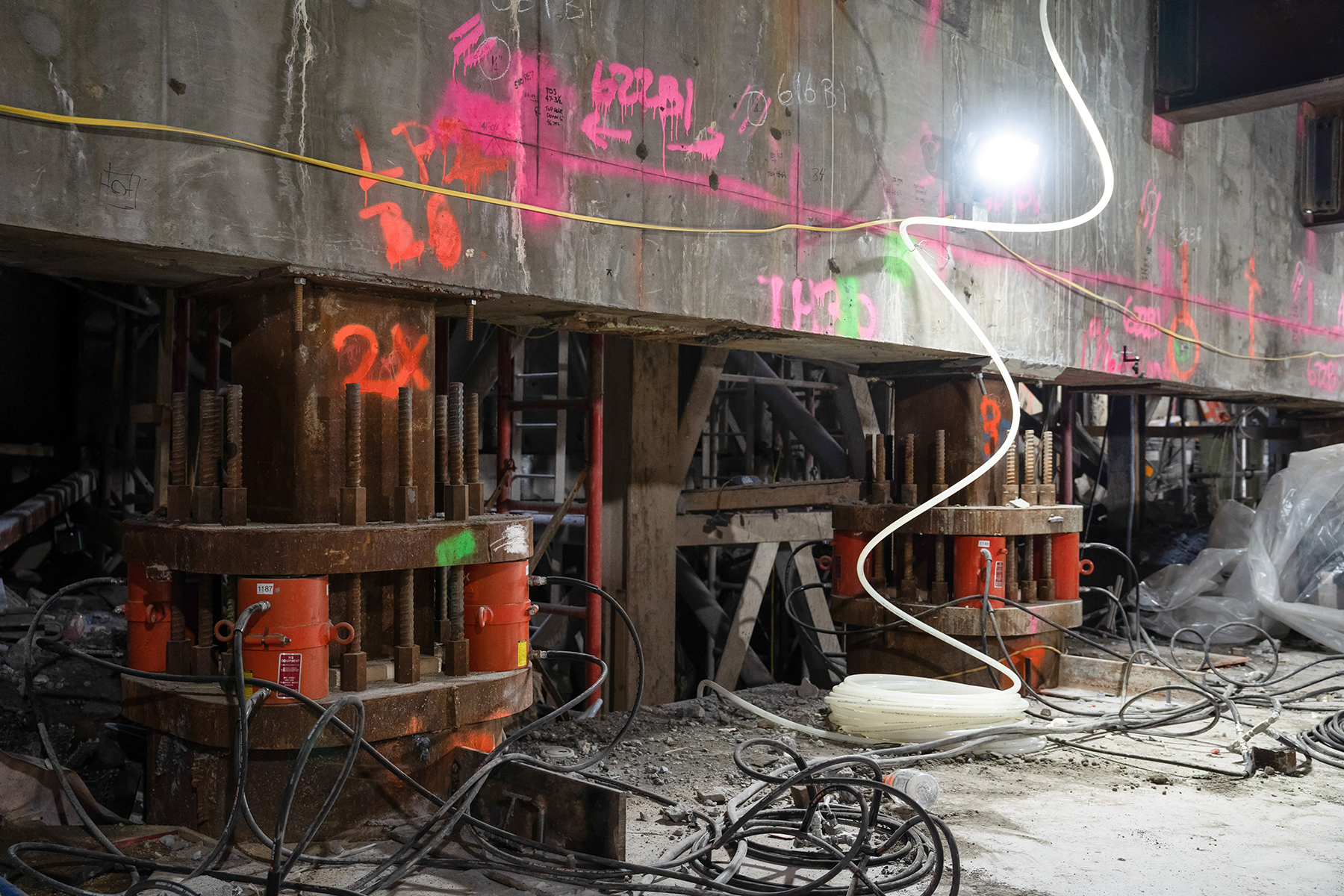
Once set, the new slab will encase the lifting posts, providing increased stability for the remaining 13 ft lift. “We should be totally up in the air sometime after St. Paddy’s Day — around the second or third week of March,” Mazzo says. Noting the significance of the project, he adds, “Nothing like this has been done before in the United States, at least not to this magnitude. To borrow a line from a popular Broadway musical, we’re defying gravity.”
Expedited schedule
Once the theater reaches its final elevation, the steel contractor will complete the columns, and then the engineers will lower the theater directly onto them. With the columns carrying the load, the foundation engineers will then remove the lifting posts. From there, the interior theater restoration will commence. Additional interior work will unfold throughout the project.
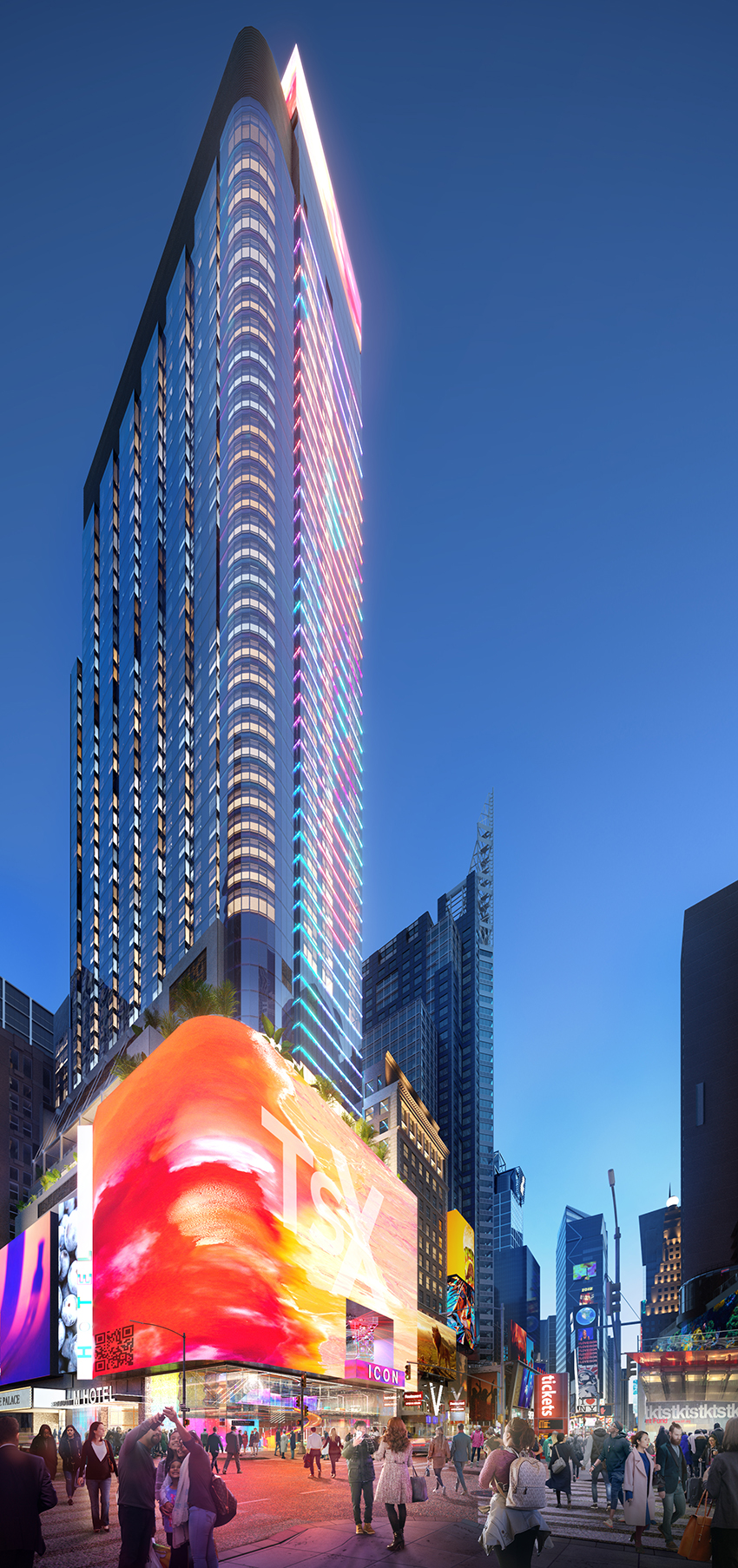
“Another thing that makes this project unique is that we’ve done much of the work in parallel versus in sequential order,” Israel says. “Normally, you do demolition, then you do excavation, foundation, and then construction. But with this project … the configuration of the retained slab and the landmark theater (means) we’re able to finish the building in an expedited manner.”
Israel expects the 550,000 sq ft building to open in the fourth quarter of 2022. At that time, an escalator will provide access from the first floor to the third-floor Palace Theatre. Retail will occupy space on the first eight floors, and the ninth and tenth floors will house a restaurant with a sweeping outdoor terrace. The hotel’s sky lobby will be located on the 11th floor, and its 669 hotel guest rooms will rise from the 16th to the 46th floor.
Mazzo says that he hopes everyone has an opportunity to visit the project once it opens. He encourages visitors to not only enjoy the multifunctional space but also marvel at the engineering that has gone into making it a reality.
“It’s an engineer’s dream to be part of a project like this,” Mazzo says. “It’s applied engineering, and it reaches deep into an engineer’s soul to realize what can be possible.”



